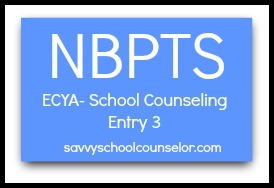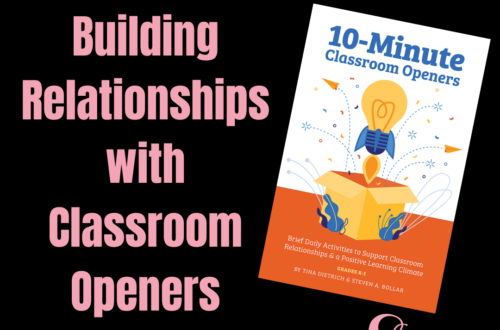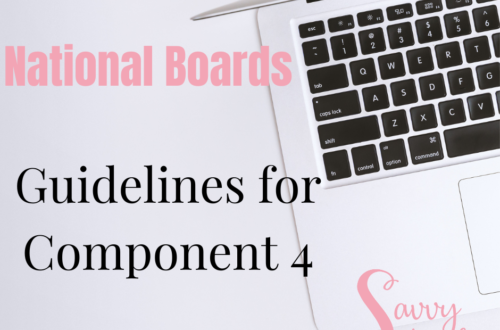National Boards: Understanding Entry 3
 Entry 3 focuses on Maximizing Academic Learning. For this entry, school counseling candidates are required to provide academic counseling to an individual student. A maximum of 12 written pages, one video recording, and an academic intervention plan must be submitted with this entry.
Entry 3 focuses on Maximizing Academic Learning. For this entry, school counseling candidates are required to provide academic counseling to an individual student. A maximum of 12 written pages, one video recording, and an academic intervention plan must be submitted with this entry.
Eight of the standards must be represented in Entry 3. I explained how to incorporate the standards into your writing in my post Planning for Entry 1. Doing this is important so be sure to refer back to that post if you still are not clear about how to do it.
I’ve heard many candidates consider this entry to be the toughest one to pass. Don’t look at this way. Approach this entry just as you have the others. Make sure to provide sufficient evidence for your assessors.
Choosing a Student for Academic Counseling
There are no age requirements for the student you wish to choose for this entry. I chose a 5th grade student for my entry. I felt as though this was a good age to receive academic counseling since our 5th graders are preparing to transition to middle school. Since I worked with a 5th grade teacher for my career lesson, I collaborated with her in order to find a student in her class to provide individual counseling. We discussed several students in her class. It was important to find a student who would not only benefit from academic advisement, but who would also be receptive to it and do his or her part to make improvements.
It is a good idea to use specific data to support your selection. You can include this data in your initial description of the student. Data may include report cards, assessment data, past test scores, or any other documentation the teacher has about the student. The teacher will be able to tell you exactly where the student needs assistance and what goals he or she would like the student to reach.
You can also conduct your own surveys once a specific goal is chosen. These results can also be used during the session. I met with my student prior to our planning session to complete a couple of surveys in order to get an idea of how he learned best and how he approached test taking. Use the information you’ve gathered from the student’s teacher to guide you in any pre-assessing you choose to conduct.
Video Recording
Your video is limited to a maximum of 15 minutes. You will need to make sure to address each of the required areas in this short period of time. As I’ve said in a previous post, take a moment first to look at the questions in section 2 (Video Recording Analysis). Here, you will learn exactly what the assessor will be looking for during the video segment. You’ll need to show various examples of your work including how you engaged the student in meaningful discussion in regard to his or her need for academic advisement, how you encouraged active participation from the student, and counseling skills and techniques used just to name a few.
When thinking about your counseling techniques, remember what the assessor will see while watching the video. Think about your seating placement. How does it look if you and the student are across from each other at a table? If sitting at a table, you’ll want to utilize a corner so you are close enough to work together yet still able to maintain your own space. Think about your non-verbal counseling skills here as well. Be sure to convey a warm, respectful, and genuine tone.
This is a good time to begin refreshing your memory about counseling theory. You will need to explain your knowledge of human growth and development and academic theories of motivation and skill development. Additionally, you will need to refer to the theoretical background for the counseling skills and techniques you implement throughout the session. Remember also- the assessment piece of the NBPTS process includes your knowledge of theory. It doesn’t hurt to begin reviewing the major theorists now.
You can read Pointers for Videos if you need to know more about what is expected in your video recording.
Academic Intervention Plan
The intervention plan should be created collaboratively with your student. Make sure this is exhibited in your video segment. The assessor should hear both your and the student’s input for the creation of the plan. As with any plan, you’ll want to include a goal and the steps you will put in place in order to reach the goal. Be sure to set high yet attainable goals for your student.
Stick around! You can follow Savvy School Counselor with free email updates. As always, I’d love to hear from you. There are always so many things I could say in these NBPTS posts. However, the posts would go on and on and on… If you have specific questions, please email me through my contact page. If I find a recurring theme in my emails, I will try to address it in another post.




7 Comments
Heather
Wow! What a wealth of info. I put off getting my national certification since I had a 10 month old and one on the way when I graduated from grad school. Their 6 & 7 now…guess I better get on it!
Linda Hines
Love your site!
Vanessa
Thank you, Linda!
Joslie
Hi,
I just really want to compliment you. I’m an intern bilingual School counselor and I just started reading your posts and can’t get enough. This is very informative and helpful. When should I start this process? Should I have experience as a school counselor or can I start as soon as I graduate? Thank you
Vanessa
Hi, Joslie! Thank you so much for your comment! You have to have three years experience before you can begin the NBPTS process. To my knowledge, this has not changed.
Moira
Thank you!!! I love this. Planning on taking mine next year when my 3 years will be good
Vanessa
You’re welcome!